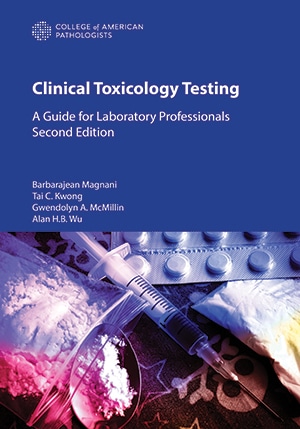January 2020—D-dimer has a problem. Several problems, in fact. Many, some might say. Let’s start with the basics regarding D-dimer assays: unit and magnitude. Setting up the equation is easy, and the digits are small: 2 × 4. When applied to D-dimer testing, however, the answer often means far-flung problems for laboratories and clinicians. Parsed out (for fans of James Thurber, this means channeling schoolmarm Miss Groby), D-dimer has two different units of measure. Some assays report fibrinogen equivalent units (FEU), and others measure D-dimer units (DDU).
Read More »January 2020
No-blot testing charts new course for Lyme Dx
January 2020—“You can eliminate blots altogether!” may sound like a pitch for a cleaning product. But it’s a line from a webpage of Zeus Scientific touting the new algorithm for Lyme disease testing that ditches Western immunoblot in favor of a two-enzyme immunoassay test sequence. The new algorithm, which the CDC recommended last year, is the first approved alternative to the standard algorithm in 25 years.
Read More »Carcinoma of unknown primary case reviewed in tumor board session
January 2020—A molecular oncology tumor board session at CAP19 explored a case of cancer of unknown primary, presented by medical oncologist Alexander Drilon, MD, research director of early drug development at Memorial Sloan Kettering Cancer Center, and Rondell P. Graham, MBBS, head of GI/liver pathology at Mayo Clinic Rochester.
Read More »Study: Subpar reporting of biomarker characteristics
January 2020—Since the Journal of Irreproducible Results arrived on the scene in 1955, founded by a physicist and a virologist, its parodies of scientific research have amused and skewered many in the scientific community. But in the world of clinical research, irreproducibility is a less than whimsical idea.
Read More »At NCI, on the trail of drug-induced liver injury
January 2020—When looking at a liver biopsy, always suspect there might be drug-induced liver injury. “But then try hard to prove there isn’t. It’s always a diagnosis of exclusion and pattern evaluation,” says David E. Kleiner, MD, PhD, reference pathologist for the Drug-Induced Liver Injury Network. In that role, he pieces together clues that point to a drug having injured a liver—or not. Drug-induced liver injury is rare, and few pathologists see it. “The incidence is between one in 100,000 and one in a million, depending on what survey you read,” Dr. Kleiner says.
Read More »New edition of toxicology testing guide now out
January 2020—CAP Publications released this month the second edition of Clinical Toxicology Testing—A Guide for Laboratory Professionals, edited by Barbarajean Magnani, PhD, MD; Tai C. Kwong, PhD; Gwendolyn A. McMillin, PhD; and Alan H.B. Wu, PhD. The first edition was published in 2012. The book has 29 chapters divided into three sections: toxicology testing in the clinical setting, toxicokinetics and methodologies for the toxicology laboratory, and specific analytes (drugs and drug classes). CAP TODAY spoke with Dr. Magnani about the new book. She is director of toxicology and chief of clinical pathology, Department of Pathology and Laboratory Medicine, Tufts Medical Center, and professor of anatomic and clinical pathology, and professor of medicine, Tufts University School of Medicine, Boston. Here is what she told us. (See excerpt below.)
Read More »Cytopathology in focus: Non-small cell lung carcinoma
January 2020—Requests for predictive biomarkers in oncology patients are becoming increasingly common in the cytology laboratory. At the time of rapid on-site evaluation, cytologists are now keenly aware of the need to collect adequate material not just for a diagnosis of malignancy but also for diagnostic and predictive molecular and immunohistochemical testing. This article provides an overview of current practices and some of the recent literature regarding predictive testing for immunotherapy in cytologic preparations in non-small cell lung carcinoma.
Read More »Cytopathology in focus: Self-collected Pap tests in the U.S. market
January 2020—The authors of an article published in the Journal of the American Society of Cytopathology participated in a public hearing at the Food and Drug Administration in January 2018. The hearing advised the FDA about what research would be required to demonstrate the safety and efficacy of a self-collected Papanicolaou test device. In the article, Staats, et al., review the literature on self-collected Pap tests. The authors also provide a review of published studies on self-collected HPV tests. They pose important questions that surround the self-collected Pap test; most remain only partially answered, given the limited evidence examining such tests in the literature.
Read More »Cytopathology in focus: Review of FDA-approved molecular testing platforms for HPV
January 2020—The Food and Drug Administration approved in 2001 the first testing modality for the detection of HPV in gynecological cytological specimens. To date, there are now five FDA-approved testing modalities, and molecular testing for high-risk HPV has become commonplace. Numerous studies have shown that high-risk HPV testing is more sensitive in detecting high-grade squamous intraepithelial lesion/cervical intraepithelial neoplasia grade two and above (HSIL/CIN2+) than cytology alone, but that cytology is more specific.
Read More »Put It on the Board
Ion Torrent Genexus launched at AMP meeting
January 2020—Thermo Fisher Scientific launched at the Association for Molecular Pathology meeting in November its Ion Torrent Genexus System. It is a fully integrated, next-generation sequencing platform that features an automated specimen-to-report workflow, with results provided in a single day. The company also introduced its Oncomine Precision Assay, a pan-cancer panel for the Genexus platform, for comprehensive genomic profiling from formalin-fixed, paraffin-embedded tissue and liquid biopsy samples with a single assay. The Genexus System minimizes user intervention and the potential for human error. Thermo Fisher says the system requires minimal amounts of tissue sample and can run small batches cost-effectively to deliver a comprehensive report in one day. Together, the company said in a statement, “these features set the stage for molecular pathologists in the future to analyze NGS information in parallel with first-line testing modalities such as immunohistochemistry.”
Q&A column
Q. How should automated body fluid cell counts be reported? Read answer. Q. Can the CAP provide guidance on revised checklist requirements GEN.77500 Liquid Nitrogen and Dry Ice and GEN.77550 Liquid Nitrogen Safety? Read answer.
Read More »From the President’s Desk: What’s the state of your state pathology society?
January 2020—Recently I attended and spoke at a meeting of the Georgia Association of Pathology. That might not sound like a big deal, but it was. This was an important occasion for me and my colleagues in Georgia because our state society had been dormant for the past decade. Thanks to the efforts of five CAP fellows and the CAP itself, we are back in Georgia.
Read More »Newsbytes
January 2020—Pathologist Ron B. Schifman, MD, practices what he preaches and preaches about what others practice relative to implementing such computer-based test-utilization management techniques as soft stops, hard stops, and those that fall in between. In a 2019 American Association of Clinical Chemistry presentation on strategies and tactics for test-utilization management, and in an interview with CAP TODAY, Dr. Schifman offered insights into a variety of information technology-based interventions.
Read More »Clinical pathology selected abstracts
Use of thromboelastography to guide blood product transfusion
January 2020—Thromboelastography and rotational thromboelastometry provide insights into blood clot development, stabilization, and dissolution. The coagulation tests provide a tracing through the clotting process, but although they are similar, they are not interchangeable.
Anatomic pathology selected abstracts
Distinct patterns of human liver regeneration following massive hepatic necrosis
January 2020—Massive hepatic necrosis is a rare and often fatal complication of various liver injuries. However, some patients survive by spontaneous hepatic regeneration. It is known that surviving hepatocytes or progenitor cells, or both, can participate in this process, but the mechanism of hepatic recovery is vague.
Molecular pathology selected abstracts
Virtual staining of tissue slides to conserve precious diagnostic samples
January 2020—Precise classification of neoplasms improves risk stratification and the ability to apply targeted treatment options, enhancing patient care. These granular diagnostic classifications increasingly rely on molecular findings that go beyond what the microscope shows the pathologist.
 CAP TODAY Pathology/Laboratory Medicine/Laboratory Management
CAP TODAY Pathology/Laboratory Medicine/Laboratory Management







